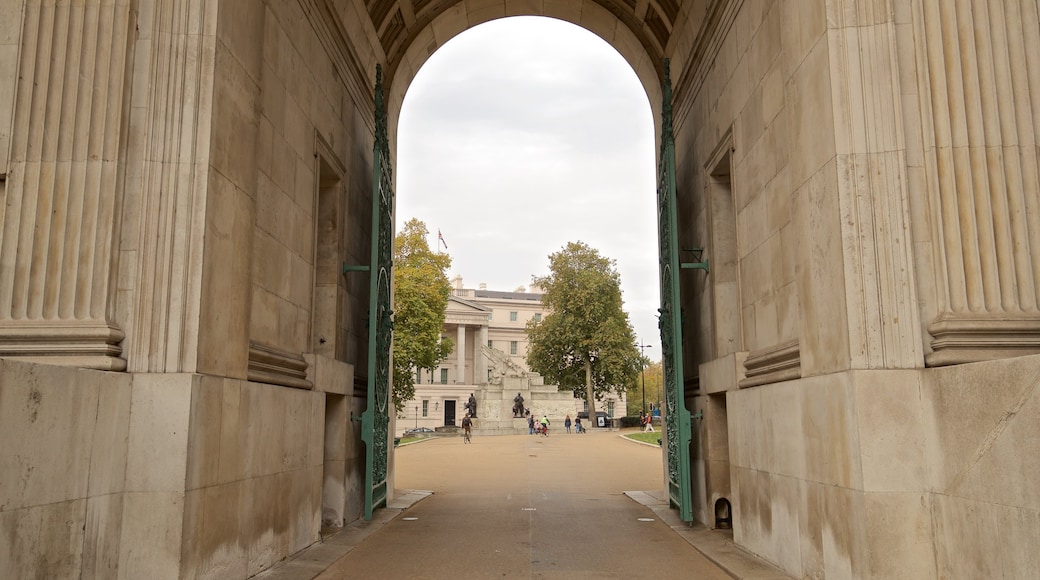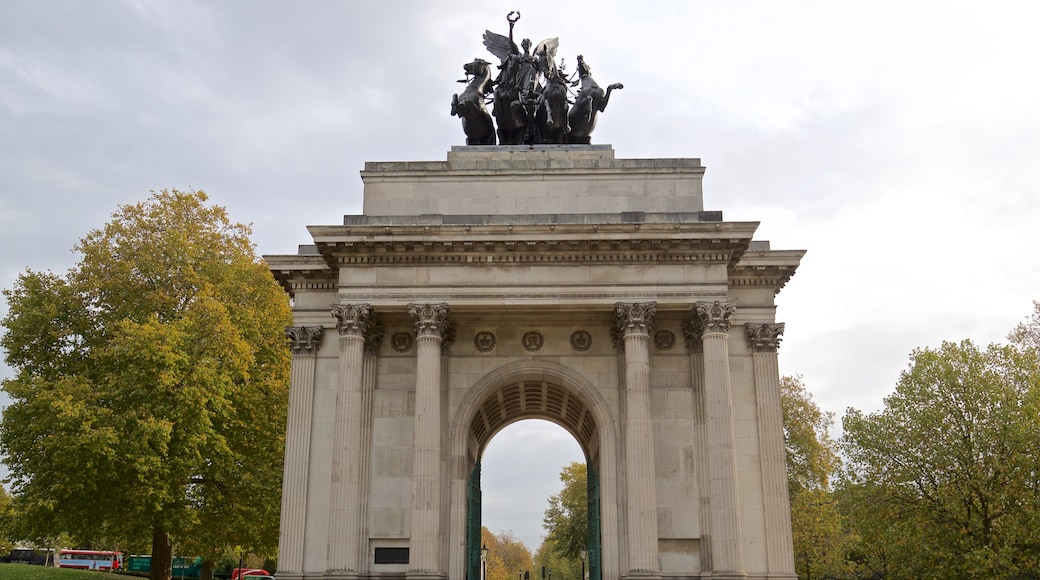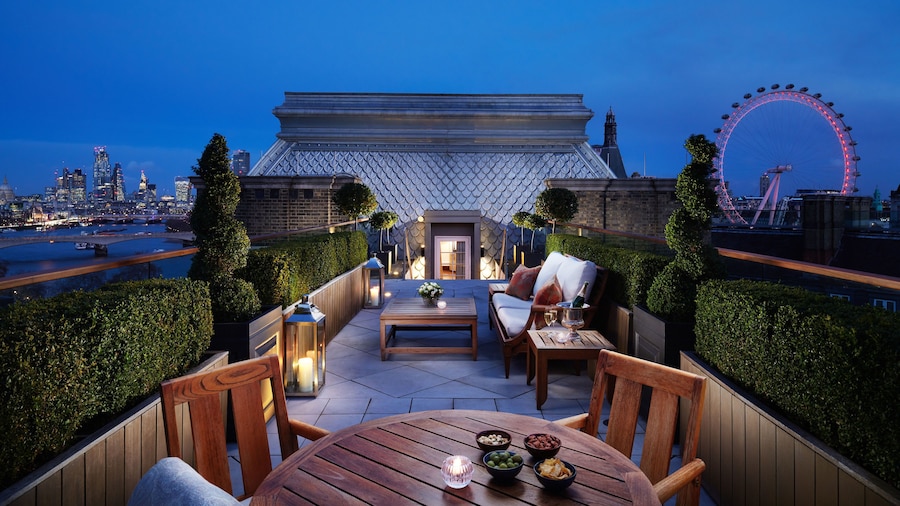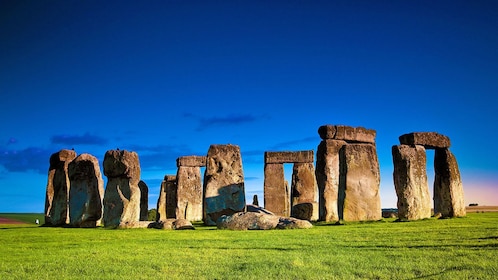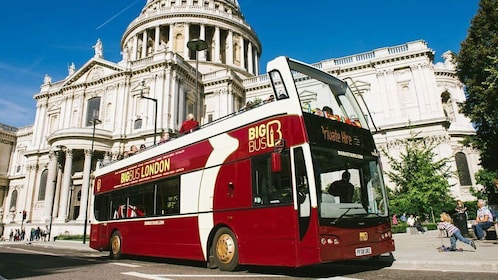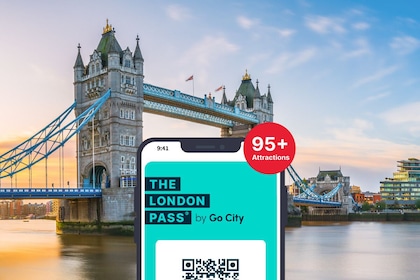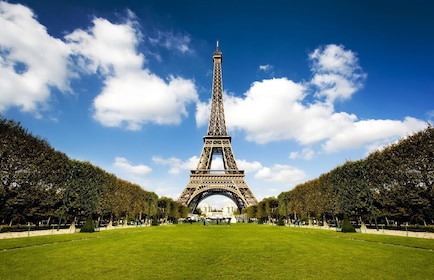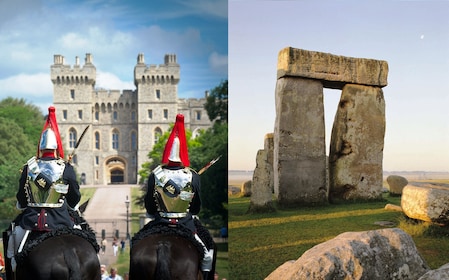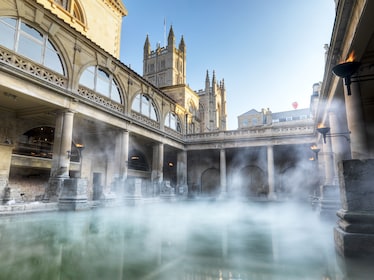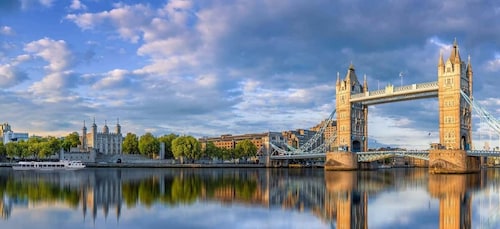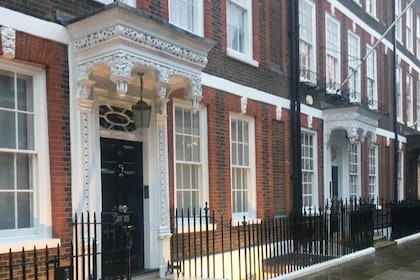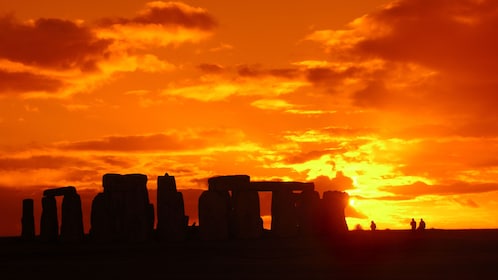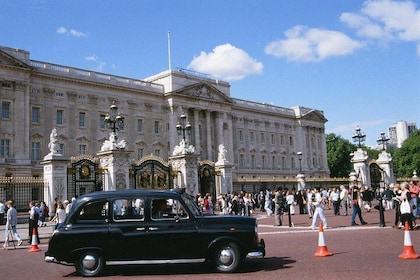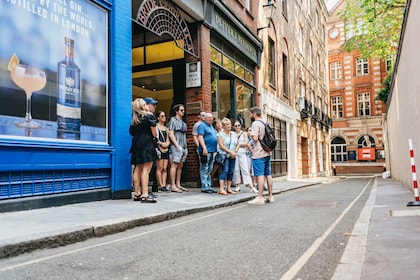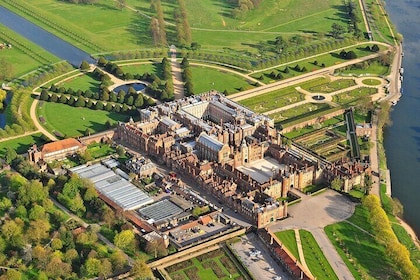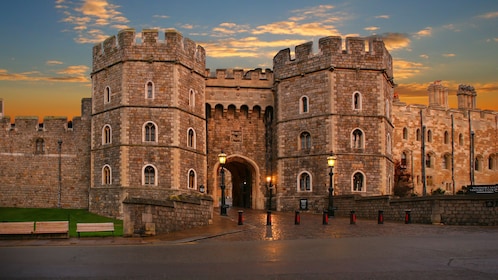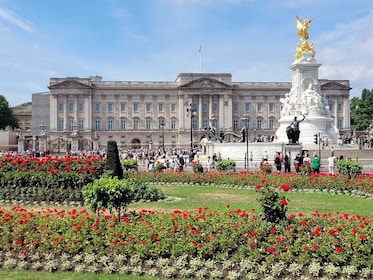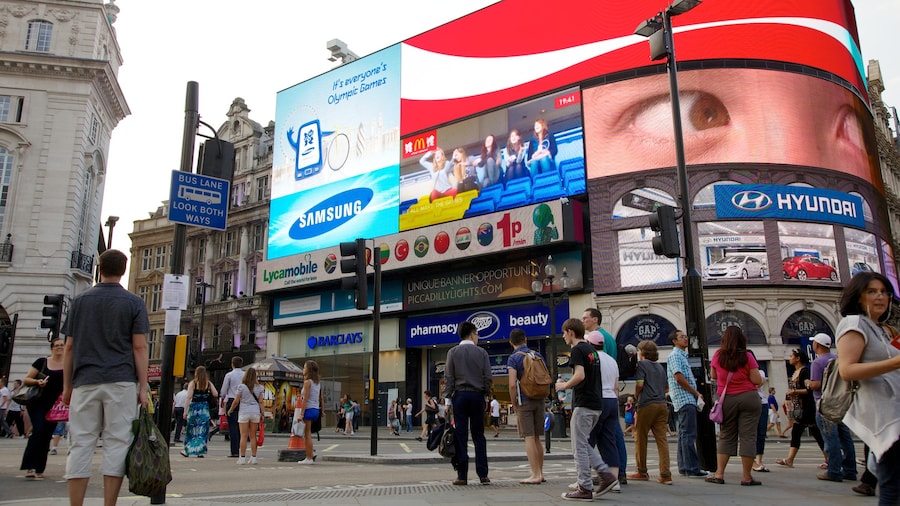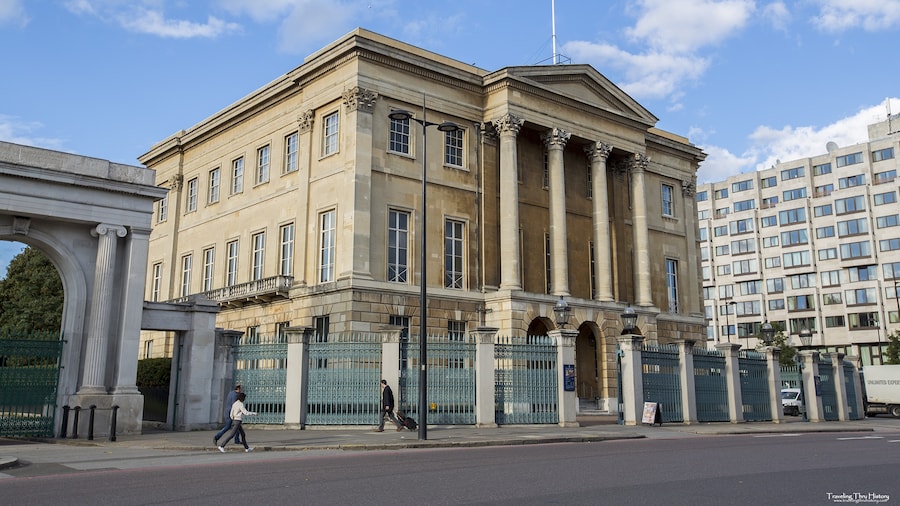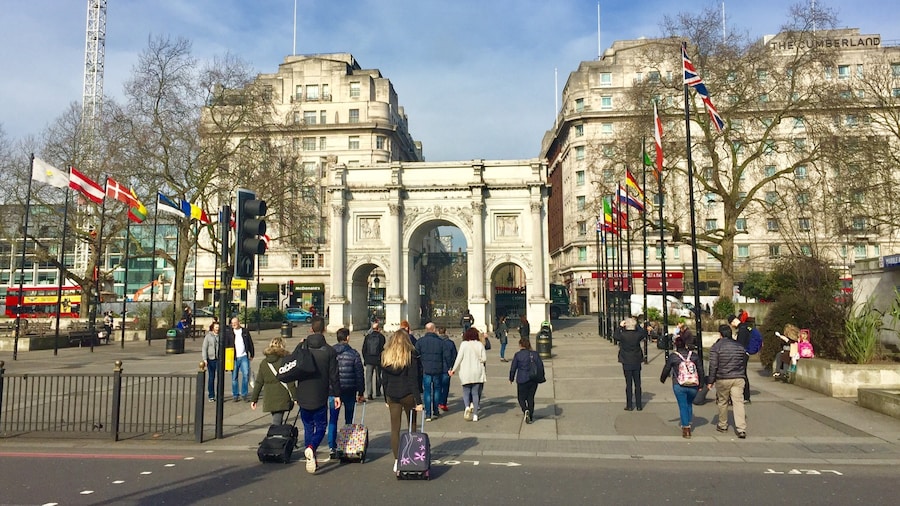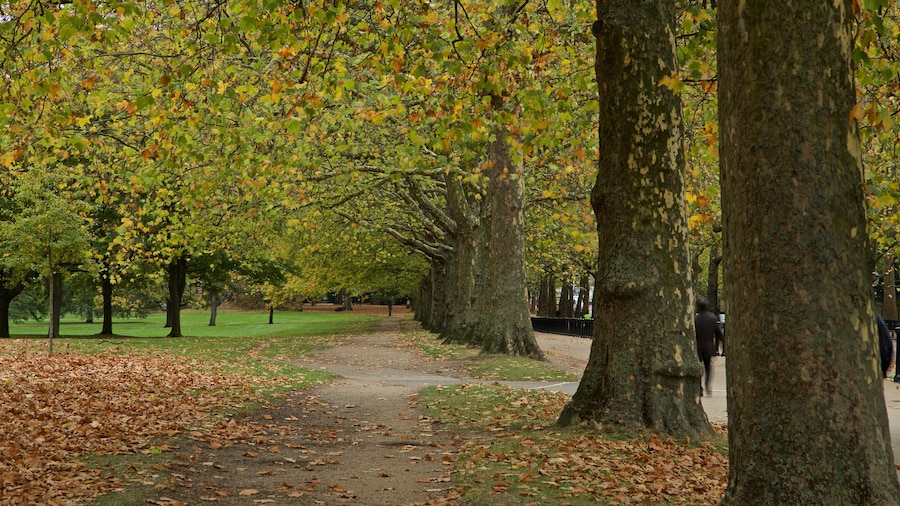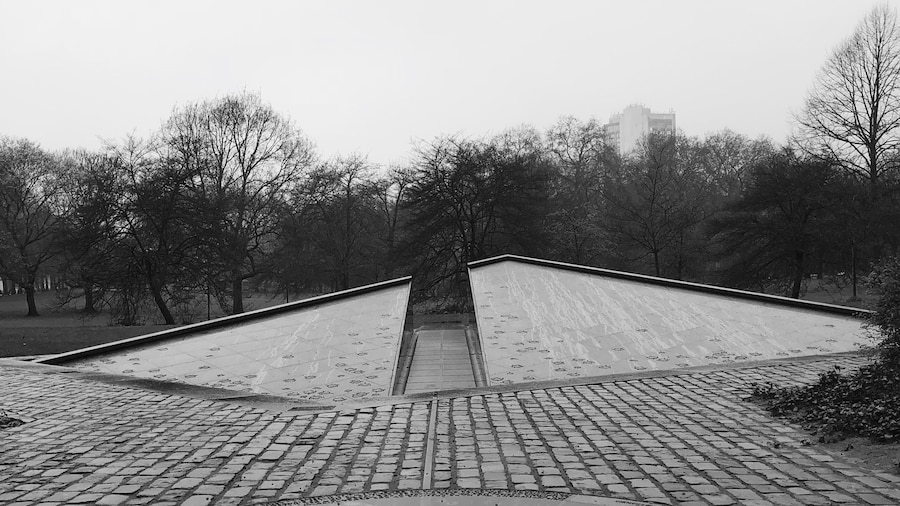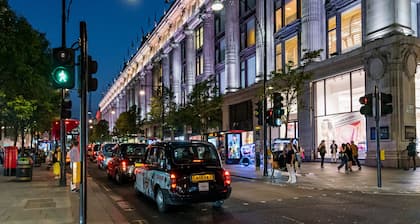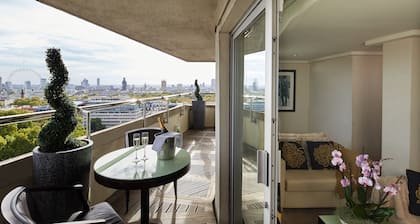As the initial entrance to Hyde Park and later a celebratory piece marking victory over Napoleon, Wellington Arch has a rich history and is one of London’s most famous emblems. At the front end of this triumphal arch are imposing columns and a rectangular pediment hoisting a bronze sculpture of a four-horse chariot. Pass through the arch for an idea of its enormous dimensions.
The site is named for Arthur Wellesley, 1st Duke of Wellington, who defeated Napoleon Bonaparte’s French army in the Battle of Waterloo in 1815. Note that it is considered a victory arch by locals, despite being initially built as an entrance to Hyde Park.
Gaze up to see the large sculpture capping the arch’s roof. It portrays the Angel of Peace descending upon a four-horse war chariot. You may also witness the Household Cavalry on their way to the iconic Changing of the Guard Ceremony. See the arch at night, when it is illuminated in a purple glow.
Pay the fee to enter the arch’s interior, which occasionally displays art and history exhibits. These usually cover themes relating to the Battle of Waterloo and the Duke of Wellington. Find out how an initial equestrian statue of the latter sparked controversy over the structure’s aesthetics. Critics argued it reduced the arch to a mere pedestal and it was taken down after his death.
Peruse the items on sale in the gift shop and climb the spiral staircase to the balconies for spectacular views of the Royal Parks. You can also spot Buckingham Palace, Apsley House and other attractions from this vantage point.
The arch contains an elevator and is open daily from morning until late afternoon. Ask for discounted entry fees for kids.
The Wellington Arch marks Hyde Park’s southeastern corner in the western part of central London. Take the London Underground to the Hyde Park Corner station via the Piccadilly Line. Discover neighboring attractions, including Buckingham Palace, Belgrave Square Garden and Hyde Park Bandstand.
